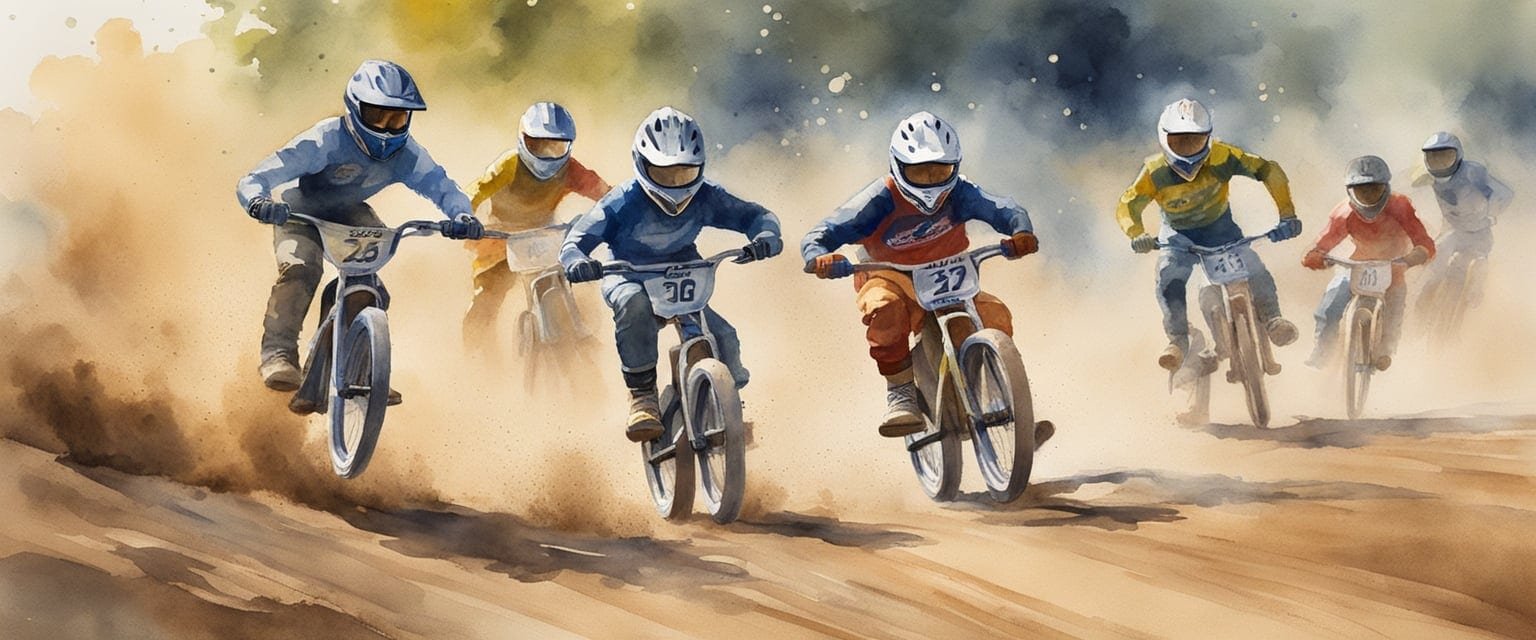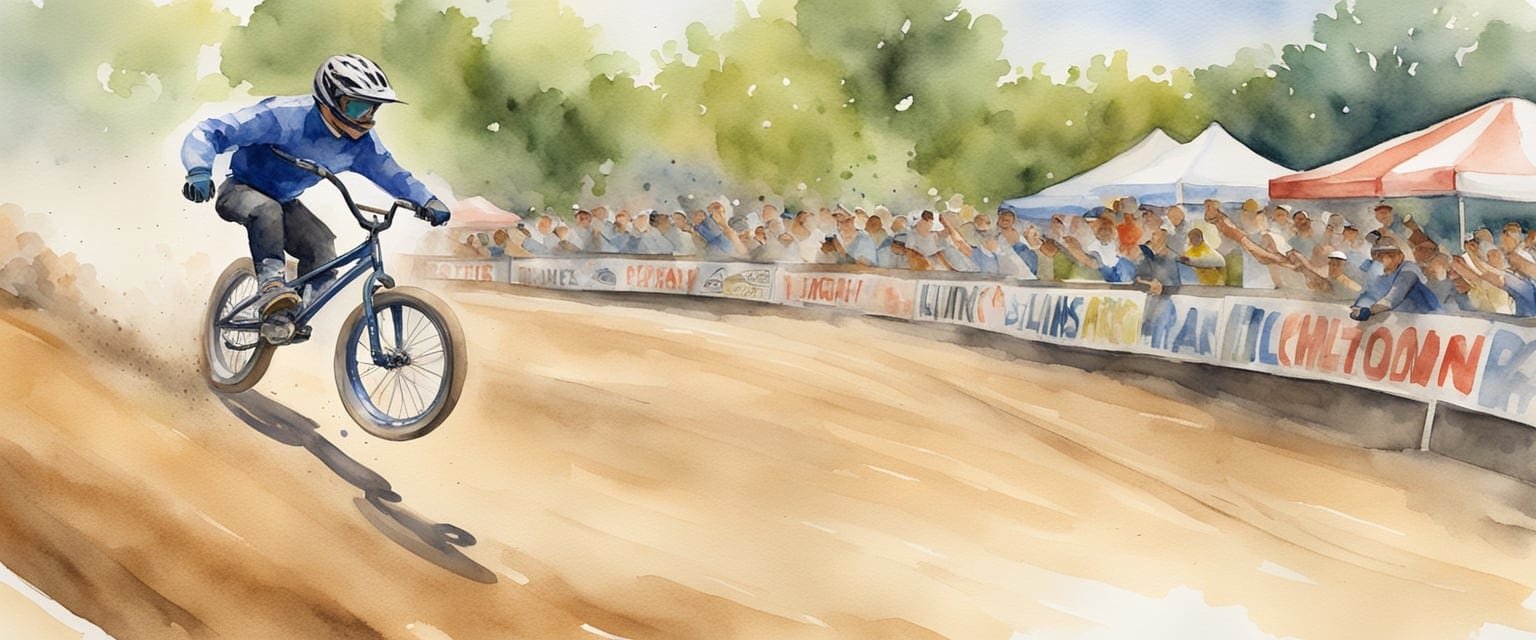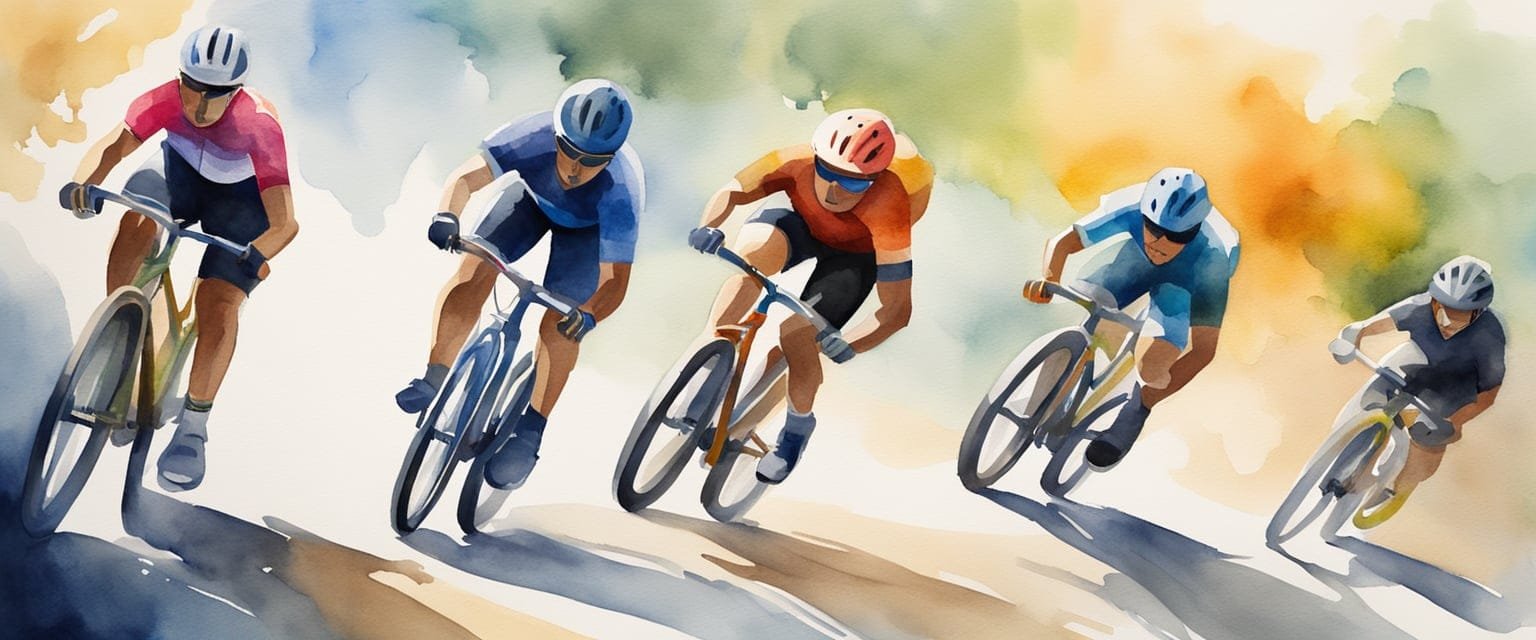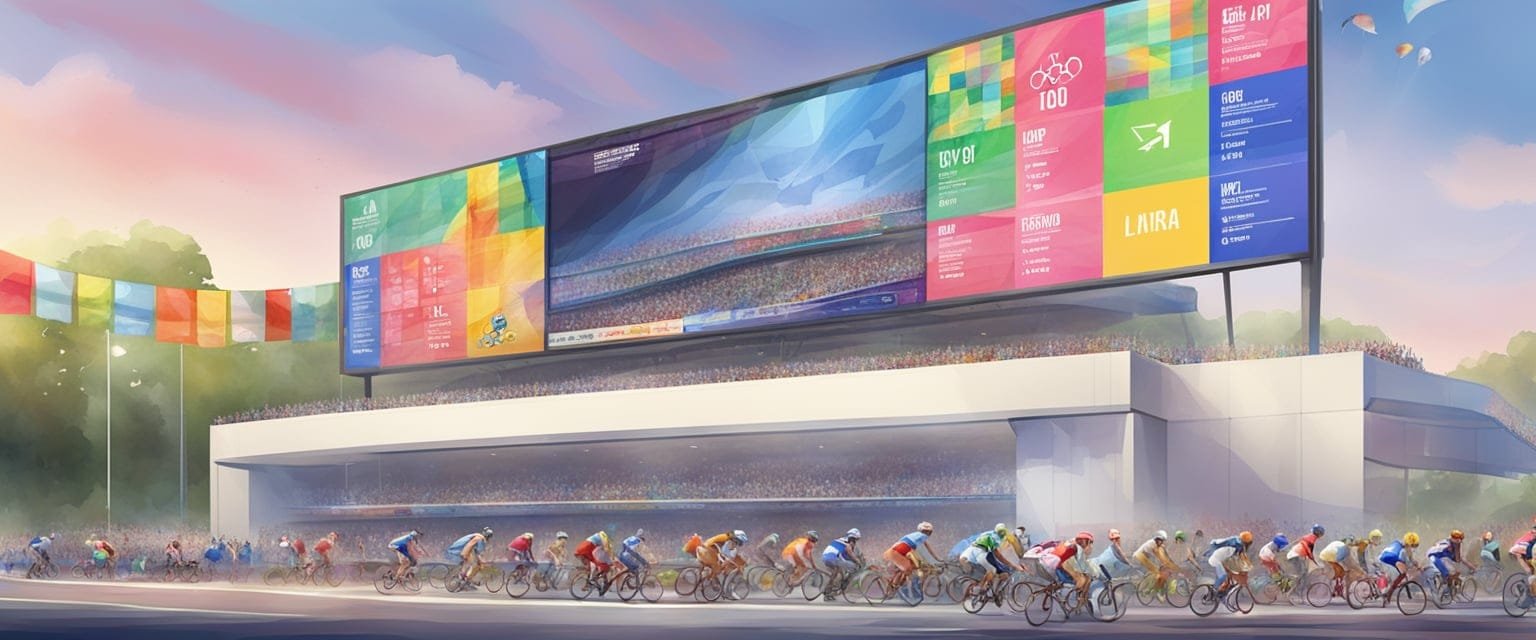BMX racing is an exciting and high-energy sport that has captured the attention of fans around the world, especially during the Olympics. In this ultimate guide to Olympic Cycling BMX Racing, I will explore its history, the rules that govern the sport, and what makes it unique compared to other cycling events. Whether you’re a long-time fan or a newcomer, there’s so much to discover about the speed, skill, and strategy involved in BMX racing.

From the design of BMX tracks to the athletes who compete at the highest level, I’ll break down the essential elements that make BMX racing not only challenging but also thrilling to watch. I’ll also touch on how BMX racing has evolved in the Olympic games and what the future may hold for this dynamic sport. Let’s dive in and uncover everything you need to know about Olympic BMX racing!
Key Takeaways
- BMX racing has a rich history in the Olympics and showcases incredible athletic talent.
- Understanding the rules and track design is key to appreciating the sport.
- Spectators can look forward to thrilling events with top athletes representing their countries.
History of BMX Racing in the Olympics

BMX racing has become an exciting addition to the Olympic Games since its debut. It showcases incredible athleticism and speed, captivating fans around the globe. I will explore its journey from the first Olympics to its upcoming event.
From Beijing 2008 to Paris 2024
BMX racing made its Olympic debut at the Beijing 2008 Games. This was a significant moment for the sport, bringing it to a global audience. The event featured a thrilling track, where riders faced sharp turns and jumps, showcasing their skills.
In London 2012, BMX racing was well-received, with competitors from various countries vying for gold. Then came the Rio 2016 Games, which saw fierce competition and standout performances from riders like Connor Fields and Mariana Pajón, who continued to build on BMX’s popularity.
The latest Olympics in Tokyo 2020, held in 2021, had exciting races and memorable moments. As I look forward to Paris 2024, I can’t wait to see how the athletes will push their limits on the track, bringing BMX racing to new heights.
Notable BMX Racing Moments
Throughout its short Olympic history, there have been many memorable moments in BMX racing. One standout was the gold medal win by Bethany Shriever at Tokyo 2020. Her incredible performance inspired many young athletes and brought attention to the sport.
Another important moment came when Mariana Pajón defended her title in Rio 2016, showing impressive skill and determination. The exhilarating atmosphere and nail-biting finishes have captivated fans worldwide.
Looking ahead to Paris 2024, I expect new records and unforgettable races. With athletes from around the world participating, BMX racing will continue to thrill audiences and add to its growing legacy in the Olympics.
Understanding BMX Racing
BMX racing is an exciting sport that combines speed, skill, and competition. It features athletes competing on purpose-built tracks with steep jumps and sharp turns. The sport is distinct from BMX freestyle, which focuses on tricks and stunts. I’ll explain the basics of BMX racing and how it differs from freestyle BMX.
Basics of the Sport
BMX racing involves riders competing on short dirt tracks. Each race typically has between eight and eight participants, starting from a gate. The goal is to cross the finish line first.
The races are generally quick, lasting around 30 seconds to a minute. Tracks are designed with various features, including ramps and obstacles that challenge the riders’ skills. Riders must have good timing, balance, and speed to navigate the course effectively.
Competitions are held worldwide, including significant events like the Olympics. Riders are grouped by age and skill level, ensuring fair competition. Scoring is based on finishing position, with points awarded for top placements.
BMX Racing vs BMX Freestyle
While both BMX racing and BMX freestyle involve bikes and skill, they focus on different aspects of the sport. BMX racing is all about speed and competition on a designated track.
In contrast, BMX freestyle centers on performing tricks and stunts. Freestyle riders often use ramps and rails to showcase their skills in parks and other venues. Events include different disciplines, such as street, park, and vert.
Each style has unique challenges and requires specific skills. I enjoy the thrill of racing with its fast-paced action, but I also appreciate the creativity in freestyle. Both offer something special for fans and athletes alike.
The BMX Race Track
The BMX race track is an exciting environment that is designed for speed, skill, and strategy. I find the unique features and challenges of the track make every race thrilling and unpredictable. Here’s a closer look at its design and features, as well as the obstacles that riders must navigate.
Design and Features
The design of a BMX race track is crucial to the competition. I often notice that the layout typically features a length of 300 to 400 meters. The course includes both straight sections and curves, allowing for quick acceleration and tight turns.
Key elements include:
- Start Hill: Riders launch from this elevated area for speed.
- Straits: Long sections for maintaining speed and positioning.
- Turns: Banked walls help riders maintain momentum while steering.
Tracks also vary in surface—some are dirt, while others may have asphalt-like materials for better grip.
Obstacles and Challenges
The obstacles on the track are what make BMX racing so thrilling. I find that these features test a rider’s skill and ability to adjust quickly. Each track has a variety of obstacles, including:
- Ramps: These allow for jumps that can change the race outcome.
- Box Jumps: Large jumps where riders catch air and must land perfectly.
- Bumps and Ruts: These add unexpected challenges that require precise handling.
Facing these obstacles successfully can often be the difference between winning and losing in a race. The design encourages not only speed but also technical skills, making each race a true test of ability.
Rules and Scoring
In BMX racing, the competition is structured in various stages, all culminating in a final showdown. Scoring is determined by finishing order and other performance factors, impacting how riders advance through the competition.
Race Format and Stages
BMX racing events typically follow a structured format. The competition begins with heats, where riders compete in groups. Each heat’s top finishers move on to the quarterfinals.
After that, the semifinals take place. From there, the fastest riders advance to the final, where they compete for medals.
There’s also a Last-Chance Qualifier. This round gives riders a final shot to make it to the finals if they didn’t qualify in earlier rounds. The number of riders varies, but usually, there are up to eight per heat.
Scoring System and Judges
The scoring system in BMX racing is straightforward. It is mainly based on the finishing order. The rider who crosses the finish line first earns the highest points, while subsequent places receive fewer points.
Judges monitor the race for any infractions that may affect a rider’s results. They ensure fair play and make decisions on disqualifications or penalties if necessary.
I always find it interesting how results can depend on a little mistake or a great performance in these thrilling, fast-paced races. Each rider’s goal is to secure the best position to earn points that will help in qualifying for the final.
Athletes and Countries

In BMX racing, the competition showcases some of the best riders from around the globe. Various countries have made their mark in this exciting sport, with talented athletes leading the way.
Top BMX Racing Nations
When I think of top BMX racing nations, a few stand out. The United States is a powerhouse known for its strong riders, including Connor Fields, a notable competitor in men’s BMX.
France also has a rich history in BMX, hosting many events and producing exceptional talents. The country’s Anne-Caroline Chausson is a legendary figure who has influenced many young racers.
Great Britain has made waves recently, especially with Bethany Shriever, who captured gold at the Tokyo 2020 Olympics. Other countries like Australia and Colombia are not far behind, featuring athletes like Logan Martin and Mariana Pajon, respectively.
Iconic BMX Olympians
Some athletes have defined BMX racing at the Olympics. Maris Strombergs from Latvia is famous for his back-to-back gold medals in 2008 and 2012. He set a high standard for future competitors.
From the Netherlands, Niek Kimmann has gained attention for his speed and skill. I admire how he dominated competitions leading up to the Olympics.
Also, I can’t forget about Charlotte Worthington from Team GB, an up-and-coming star showcasing impressive skills. Each of these riders contributes to the sport’s legacy, inspiring future generations worldwide.
Competition Strategy
In BMX racing, having a solid competition strategy is key to success. I find that focusing on both techniques and my physical and mental preparation helps me perform at my best during events.
Techniques and Tricks
Mastering techniques and tricks is crucial in BMX racing. Each race consists of heats where I need to execute my skills effectively.
I pay attention to my lines, which are the fastest routes on the track. By choosing the right line, I can shave valuable seconds off my time.
In addition, I practice various tricks to enhance my performance. I concentrate on the difficulty and execution of each trick, ensuring I can pull them off smoothly. Creativity and originality during heats also give me an advantage, allowing me to stand out among my competitors.
Physical and Mental Preparation
Preparing both my body and mind is essential for BMX racing. Physically, I focus on building strength, agility, and stamina to handle short bursts of high-energy racing. Regular workouts and drills help me stay fit and ready for the intense demands of each heat.
Mentally, I work on visualization techniques. Before a race, I picture my performance, including my tricks and the competition format. This practice helps reduce anxiety and boosts my confidence. I also remind myself to stay focused on my strategy, adapt to the competition, and enjoy the racing experience.
Event Schedule and Venues

I find the event schedule and venues for BMX racing at the Olympics intriguing. Let’s look at when the races are happening and where the competitions will take place.
Olympic BMX Racing Schedule
The BMX racing events will run from July 26 to August 11, 2024. There are various rounds, including trials, semifinals, and finals.
Here’s a quick look at some key dates:
- Quarterfinals: Dates vary, so it’s best to check the official schedule.
- Semifinals: Usually held around the same timeframe as the quarterfinals.
- Finals: The final races will be on August 11.
These events are part of a packed Olympic program that includes exciting competitions across multiple sports.
Notable Venues
The main venue for BMX racing is the Saint-Quentin-en-Yvelines BMX Stadium, located just outside Central Paris. This stadium is designed specifically for BMX events, featuring a thrilling track that challenges racers with jumps and turns.
Another important location is the Place de la Concorde, where fans can enjoy various Olympic festivities. While it won’t host races, it will feature events and celebrations related to the Olympics.
I look forward to seeing how the venues create an electric atmosphere for both athletes and fans.
Spectating BMX Racing
Watching BMX Racing at the Olympics is an exciting experience. From the roar of the crowd to the thrill of the competition, there’s a lot to take in. Here are some important tips and insights to enhance your viewing experience.
Tips for Live Viewing
When attending a BMX Racing event live, consider your seating choice. Find a spot with a clear view of the entire track. This way, you can see the riders as they launch from the high start hill and navigate the course.
Bring along some essentials such as sunscreen, water, and ear protection. The energy of the crowd can be loud, especially as the riders compete for the Gold Medal in thrilling finals.
Make sure to check the schedule for race times and heats. Knowing when to watch specific runs will help you not miss any of the action. Being prepared will add to your enjoyment.
Understanding the Runs
Each BMX Racing run is an intense experience. Riders compete in heats, with a maximum of eight participants on the track at once. The races are typically short, lasting just seconds, but showcase a range of styles and techniques.
During each run, watch for how riders take the jumps and curves. Some may go for speed, while others focus on technique to gain an edge. Understanding their strategies can enhance your appreciation of the sport.
In the finals, the top competitors face off for a chance at Olympic glory. I find it exciting to see how each rider adapts their style to the pressure of the moment. The thrill of the chase and the fight for victory makes every run unforgettable.
The Future of BMX Racing
BMX racing is on the cusp of exciting changes. The sport is evolving with new styles, techniques, and a growing global presence. I find it fascinating to see how these developments will shape competition in upcoming events, especially with the Paris Olympics just around the corner.
Evolving Styles and Tricks
In BMX racing, I’ve noticed a shift in styles. Riders are pushing their limits, incorporating more complex tricks into races. This evolution creates a more dynamic and engaging experience for spectators.
As the sport progresses, we see greater emphasis on flow and variety. Riders like to mix speed with creativity, crafting pathways that aren’t just about finishing first. This blend makes both the men’s and women’s events more thrilling to watch.
Growth of BMX Racing Worldwide
BMX racing is growing significantly around the globe. I see countries investing in their riders, aiming for gold medals at major competitions like the Paris Olympics. More children are getting involved, building grassroots programs that strengthen the sport’s foundation.
International competitions are also on the rise, allowing riders to gain experience and showcase their skills. With this growth, I believe BMX racing will attract even more fans, bringing fresh energy to this exciting sport.
Frequently Asked Questions
I often get questions about BMX Racing at the 2024 Olympics. Here are the answers to some of the most common ones, covering dates, tickets, qualifying riders, new sports, where to watch, and rider speeds.
What are the dates for BMX Racing at the Olympics 2024?
BMX Racing at the 2024 Olympics will take place from July 30 to August 1, 2024. Make sure to mark these dates if you plan to watch the thrilling races.
How can I purchase tickets for the BMX Racing event in the 2024 Olympics?
Tickets for BMX Racing can be purchased through the official Olympic Games website. It’s best to buy them early, as popular events like BMX tend to sell out quickly.
Who are the qualifying riders for the Olympic BMX Racing competition in 2024?
Qualifying riders include those who perform well in various international competitions and meet the Olympic qualification standards set by the UCI. These events take place leading up to the Olympics and determine who gets to compete.
Can you tell me which new sports are added to the 2024 Olympics along with BMX Racing?
Along with BMX Racing, the 2024 Olympics will feature new sports like breaking (breakdancing), skateboarding, and surfing. These additions reflect a growing interest in urban and youth-oriented sports.
Where can I watch the BMX Freestyle events during the 2024 Olympic Games?
You can watch BMX Freestyle events on major sports networks and streaming services that cover the Olympics. Check your local listings for specific channels and times for coverage.
How fast do riders typically go during Olympic BMX races?
During Olympic BMX races, riders can reach speeds of up to 40 miles per hour. The fast-paced nature of the sport adds to the excitement of each race.

